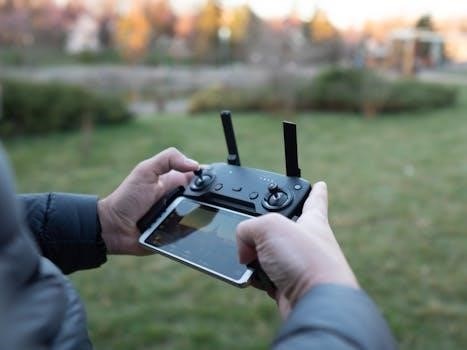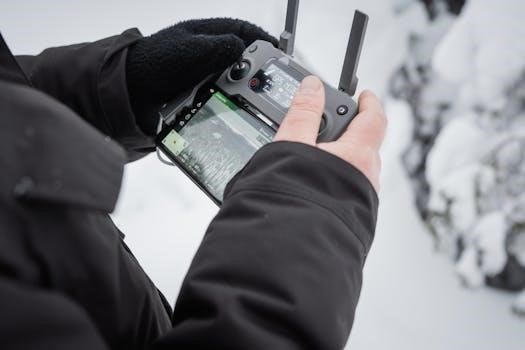Harbor Breeze Remote Control Manual⁚ A Comprehensive Guide
This comprehensive guide offers detailed instructions for your Harbor Breeze remote control. This guide is designed to enhance your understanding of your fan and remote. It includes troubleshooting tips and model identification guidance, ensuring seamless operation. You’ll find everything needed here.
Identifying Your Harbor Breeze Remote Model
The initial step in effectively using your Harbor Breeze remote control involves accurately identifying the specific model. Remotes vary significantly in features, layout, and compatibility, contingent upon the corresponding fan model.
Locating the model number is essential for accessing the correct documentation and troubleshooting information. Typically, the model number is found in one of two places⁚ either on the instruction manual that accompanied your ceiling fan or directly on the remote itself. Examine the back of the remote for a label containing this crucial identifier.
Once you’ve located the model number, cross-reference it with online resources or the Harbor Breeze website to confirm compatibility and access specific instructions. Knowing your remote’s model will enable you to understand its unique functions.
Some common models include, but are not limited to, CHQ8BT7098T. Identifying the model is critical for proper syncing and operation, ensuring a seamless experience with your ceiling fan. This will help with troubleshooting also.
Locating the Model Number
Finding the model number of your Harbor Breeze remote control is a crucial step in ensuring you have the correct information for operation and troubleshooting. This number is your key to unlocking specific details about your remote’s functions and compatibility.
Start by examining the back of the remote. Most Harbor Breeze remotes have a sticker or label affixed to the rear casing. This label typically includes the manufacturer’s name, compliance information, and, most importantly, the model number. Look for a sequence of letters and numbers, such as “FAN35T” or “RRTX012.”
If you cannot find the model number on the remote itself, consult the original packaging or the ceiling fan’s instruction manual. The manual usually contains a list of compatible remotes or a parts diagram that identifies the remote model.
In cases where the sticker has worn off or the manual is unavailable, try searching online using descriptive terms like “Harbor Breeze ceiling fan remote” along with any other identifying marks on the device. Once located, keep it handy for future reference.
Understanding Remote Control Functions
To effectively use your Harbor Breeze remote control, it’s essential to understand the function of each button. Standard features often include fan speed control, light on/off, and dimming capabilities. Some advanced models may also offer a reverse setting switch and sleep timer.
The fan speed buttons typically allow you to cycle through high, medium, and low speeds. You can turn the fan off completely using a dedicated “FAN/OFF” button. The light button controls the ceiling fan’s light fixture. Press it once to turn the light on or off. If your remote supports dimming, holding the light button may increase or decrease the brightness.
The reverse setting switch changes the direction of the fan blades. This is useful for circulating air differently in summer and winter. In the summer, the fan should rotate counter-clockwise to create a cooling breeze. In the winter, it should rotate clockwise to distribute warm air that has risen to the ceiling.
Some remotes have a sleep timer button, which allows you to set the fan to turn off automatically after a set amount of time. Consult your manual for specific details.
Fan Speed Control
The fan speed control is a primary function of your Harbor Breeze remote control. Typically, the remote features buttons that allow you to adjust the fan’s speed to your desired comfort level. These controls commonly include options for high, medium, and low speeds. Understanding how to effectively use these settings can significantly enhance your comfort and energy efficiency.
To increase the fan speed, press the “High” button. This will set the fan to its maximum speed, providing the most powerful airflow. For a moderate breeze, select the “Medium” speed setting. This is ideal for maintaining a comfortable environment without excessive power consumption.
If you prefer a gentle airflow, especially during sleep, choose the “Low” speed setting. This setting minimizes noise and energy usage. Some remotes may also have an “Off” button to completely stop the fan’s operation.

Experiment with different speed settings to find the perfect balance of comfort and energy savings. Remember to consult your Harbor Breeze manual for specific instructions and additional features related to fan speed control. The manual may provide tips on optimizing airflow for different seasons or room sizes.

Light On/Off and Dimming
Controlling the light on your Harbor Breeze ceiling fan is straightforward with your remote control. Most remotes feature a dedicated button for turning the light on and off, usually marked with a lightbulb icon. A simple press of this button toggles the light between its on and off states.
Many Harbor Breeze remotes also offer dimming capabilities, allowing you to adjust the brightness of the light to suit your preferences. To dim the light, press and hold the light button. The light will gradually dim or brighten, depending on its current setting. Release the button when you reach your desired brightness level.
Some remotes have preset dimming levels, while others offer continuous dimming. Refer to your Harbor Breeze manual for specific instructions on how to use the dimming feature on your particular model.
If your remote has a “Light Mode” button, it may allow you to switch between different lighting modes, such as a soft white or daylight setting. This feature can enhance the ambiance of your room. Always ensure that the light bulbs in your fan are compatible with the dimming function to avoid damage or flickering. The manual will provide guidance on compatible bulb types.
Reverse Setting Switch
The reverse setting switch on your Harbor Breeze remote control allows you to change the direction of your ceiling fan’s rotation. This feature is particularly useful for optimizing comfort in both summer and winter.
In the summer, the fan should rotate counter-clockwise, pushing air downwards to create a cooling breeze. During the winter, reversing the fan’s direction to clockwise pulls air upwards, circulating warm air that has risen to the ceiling back down into the room. This can help reduce heating costs.
To activate the reverse setting, locate the reverse button on your remote; Some remotes have a dedicated button, while others may require you to press and hold a specific button combination. Refer to your Harbor Breeze user manual for precise instructions.
Before changing the fan’s direction, ensure that the fan is turned off and has come to a complete stop. Activating the reverse function while the fan is spinning can cause damage to the motor.
If your remote does not have a reverse function, the switch may be located on the fan motor housing itself. In this case, you will need to manually change the switch position. Again, make sure the fan is completely stopped before doing so. Regularly using the reverse function can significantly improve your home’s energy efficiency and comfort.
Syncing the Remote Control to the Receiver
Syncing your Harbor Breeze remote control to the receiver is essential for proper operation. The remote communicates with a receiver unit, typically located within the fan’s canopy. If the remote isn’t working, or if you’ve replaced the remote, syncing ensures they communicate effectively.
First, turn off the power to the ceiling fan at the circuit breaker. Wait for about 10-20 seconds, then turn the power back on. This resets the receiver.
Within 30 seconds of restoring power, press the “Learn” or “Sync” button on the remote. This button may be located in the battery compartment or on the remote’s face. Use a small screwdriver or paperclip to press it if needed.
Some Harbor Breeze models require holding the “Learn” button until the fan light blinks or the fan makes a sound, indicating successful synchronization.
If your remote lacks a “Learn” button, consult your Harbor Breeze manual for specific instructions, as some models use a different syncing method involving a series of button presses.
If syncing fails, double-check the battery in the remote control and ensure it’s correctly installed. Also, verify that there are no obstructions between the remote and the receiver.
Keep in mind that some older Harbor Breeze fans use DIP switches for syncing. In such cases, ensure that the DIP switch settings in the remote match those in the receiver.
Re-syncing Instructions
If your Harbor Breeze remote control stops working, re-syncing it with the receiver can often resolve the issue. Re-syncing establishes a fresh connection between the remote and the fan’s receiver, ensuring reliable communication.
Begin by cutting off the power supply to the ceiling fan. Locate the circuit breaker that controls the fan and switch it to the “off” position. Leave the power off for at least 1-2 minutes. This step clears any residual signals and prepares the receiver for re-syncing.
After the waiting period, restore power to the fan by switching the circuit breaker back to the “on” position.
Within 30 seconds of restoring power, initiate the re-syncing process. This quick timing is crucial because the receiver enters a pairing mode for a short duration after power is restored.
Locate the “Learn” or “Sync” button on your Harbor Breeze remote. This button is usually found in the battery compartment or on the remote’s front panel.
Use a small tool, like a screwdriver or paperclip, to press and hold the “Learn” or “Sync” button. Hold the button down until you observe a response from the fan, such as the light blinking or the fan blades twitching. This indicates that the remote and receiver are successfully re-synced.

If your remote lacks a “Learn” button, consult the Harbor Breeze manual for model-specific re-syncing procedures. Some models might require a sequence of button presses.
Using the Wall Mount Bracket
The wall mount bracket included with your Harbor Breeze remote control offers a convenient storage solution, ensuring the remote is always within easy reach and less likely to get lost. Correctly using the wall mount bracket enhances both the functionality and organization of your ceiling fan system.
The bracket is designed to securely hold your remote when it’s not in use, preventing it from being misplaced or damaged.
To use the wall mount bracket effectively, first, choose a suitable location on your wall. Select a spot that is easily accessible, ideally near the fan itself or in a frequently used area of the room. Ensure the location is away from direct sunlight or sources of heat, which could potentially damage the remote over time.
Before installation, familiarize yourself with the bracket’s design. Most brackets consist of a base that attaches to the wall and a cradle or holder that secures the remote.
To mount the bracket, you’ll typically need a screwdriver and the screws included in the packaging. Hold the bracket against the wall at the chosen location and mark the screw holes with a pencil.
If mounting on drywall, consider using drywall anchors for added stability. Drill pilot holes at the marked locations and insert the anchors if necessary.
Align the bracket with the pilot holes and screw it securely to the wall. Ensure the bracket is level to prevent the remote from slipping out.
Once the bracket is mounted, simply slide the remote into the cradle or holder. The remote should fit snugly, preventing it from falling out accidentally.
Installing the Bracket
Installing the wall mount bracket for your Harbor Breeze remote control is a straightforward process that enhances convenience and prevents misplacement of the remote. Proper installation ensures the bracket is securely attached to the wall, providing a stable and accessible storage location for your remote.
Begin by selecting an appropriate location for the bracket. Consider proximity to the ceiling fan, ease of access, and visibility. Choose a smooth, flat surface away from moisture and direct sunlight.
Gather the necessary tools⁚ a screwdriver (Phillips head), a pencil, and possibly a drill with appropriate drill bits if you’re installing into drywall or plaster.
Position the bracket against the wall at your desired location. Use a pencil to mark the screw hole positions on the wall. Accurate marking is crucial for a secure installation.
If installing into drywall, it’s recommended to use drywall anchors to provide additional support. Drill pilot holes at the marked locations, ensuring the holes are slightly smaller than the drywall anchors. Insert the drywall anchors into the pilot holes.
If installing into a stud, you can skip the anchor step and screw directly into the wood.
Align the bracket with the marked holes or inserted anchors. Insert the screws through the bracket and into the wall, tightening them until the bracket is firmly attached. Avoid over-tightening, which could damage the bracket or the wall.
Ensure the bracket is level and stable before fully tightening the screws. A level bracket prevents the remote from slipping out.
Once the bracket is securely installed, test its stability by gently pressing on it. The bracket should not move or wobble.
Finally, slide your Harbor Breeze remote control into the bracket. It should fit snugly and securely, ready for convenient access whenever needed.
Troubleshooting Common Issues
Many Harbor Breeze remote control users encounter common issues that can often be resolved with simple troubleshooting steps. Addressing these problems promptly ensures continued convenience and functionality of your ceiling fan.
One frequent issue is the remote not responding. First, check the batteries. Ensure they are properly installed and have sufficient charge. Replace the batteries with fresh ones to eliminate low battery power as the cause.
If the batteries are not the issue, verify that there are no obstructions between the remote and the fan’s receiver. Obstacles can interfere with the signal transmission.
Another common problem is the fan or light not operating correctly. Make sure the ceiling fan’s manual switch is set to high speed and the light kit (if applicable) is in the “on” position. These settings are necessary for remote operation.
Interference from other devices can also cause issues. Try turning off nearby electronic devices that might be emitting interfering signals.
If the remote still doesn’t work, re-sync the remote to the receiver. Turn off the main power to the fan, then turn it back on. Within 30 seconds, press the “Learn” or “Sync” button on the remote or receiver (refer to your Harbor Breeze remote control manual for the exact procedure).
If the light flickers or dims unexpectedly, check the light bulb compatibility with the fan’s dimmer function. Use bulbs that are compatible with dimming.
For persistent problems, resetting the remote can sometimes resolve the issue. Look for a reset button on the remote or consult the manual for instructions.
If all else fails, contact Harbor Breeze customer support for further assistance or consult the Harbor Breeze remote control manual for additional troubleshooting tips.

Resetting the Remote Control
Resetting your Harbor Breeze remote control can often resolve various operational issues, restoring it to its default settings and clearing any potential glitches. This process is generally straightforward, but it’s essential to follow the correct steps to avoid further complications.
First, locate the reset button on your Harbor Breeze remote control. This button is usually small and may require a pointed object, such as a pen or paperclip, to press. Refer to your specific Harbor Breeze remote control manual for the exact location of the reset button, as it can vary depending on the model.
If your remote doesn’t have a dedicated reset button, try removing the batteries for a short period, typically 10-15 seconds. This action can sometimes achieve a similar effect as pressing a reset button, clearing the remote’s memory.
After either pressing the reset button or removing and reinserting the batteries, the remote should be reset. Test the remote by attempting to control the fan speed and light functions.
If the remote still doesn’t function correctly after resetting, it might be necessary to re-sync the remote to the receiver; Follow the syncing instructions provided in your Harbor Breeze remote control manual. This usually involves turning off the power to the fan, then turning it back on and pressing a specific button on the remote within a certain timeframe.
If resetting and re-syncing don’t solve the problem, consider replacing the batteries with a new set. Low battery power can sometimes cause erratic behavior that mimics other issues.
In persistent cases, consult the Harbor Breeze remote control manual for additional troubleshooting steps or contact Harbor Breeze customer support for further assistance. They may be able to provide specific guidance based on your remote model.
